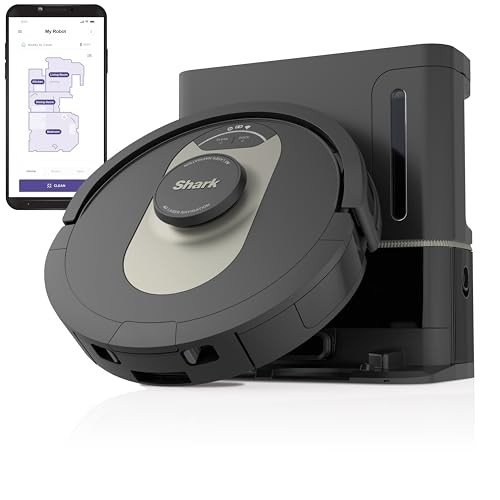
Intelligent Vacuum Cleaner
Add a review FollowOverview
-
Founded Date May 4, 1959
-
Sectors Transport
-
Posted Jobs 0
-
Viewed 2
Company Description
What’s The Job Market For Automatic Hoover Robot Professionals?
The Rise of Automatic Hoover Robots: Revolutionizing Home Cleaning
In today’s hectic world, technology continues to improve the way we live and work. Amongst the innovations making a considerable effect on households are automatic hoover robots, typically referred to simply as robot vacuums. These intelligent cleaning machines assure not only convenience but likewise performance in keeping clean living spaces. This article checks out the evolution, advantages, limitations, and future of automatic hoover robots.
The Evolution of Automatic Hoover Robots
The concept of automated cleaning devices goes back to the early 20th century, however it wasn’t till the development of sophisticated robotics, sensors, and expert system that robot vacuums ended up being viable. The following table shows key turning points in the development of automatic hoover robots:

| Year | Turning point |
|---|---|
| 1996 | The very first automatic vacuum is presented by Electrolux. |
| 2002 | iRobot releases the Roomba, a consumer-grade robot vacuum. |
| 2010 | Introduction of innovative mapping innovation and crash sensing units. |
| 2016 | Robotic vacuums start integrating with smart home systems. |
| 2020 | Increased adoption of AI and artificial intelligence for better cleaning algorithms. |
How Automatic Hoover Robots Work
Automatic hoover robots run utilizing a combination of sensing units and algorithms to browse family spaces. Below are essential elements that contribute to the performance of these devices:
- Sensors: Lidar (light detection and ranging), infrared, and cliff sensors help the robot map the area and avoid barriers.
- Mapping Technology: Many designs now offer innovative mapping abilities, allowing efficient navigation through rooms, recognizing high-traffic locations, and remembering the design of your home.
- Cleaning Modes: Most robot vacuums include numerous cleaning modes, including area cleaning, edge cleaning, and systematic navigation.
- App Connectivity: Many contemporary styles permit control through smart device apps, enabling users to schedule cleanings and customize settings from another location.
Benefits of Automatic Hoover Robots
Automatic hoover robots offer a myriad of advantages, making them appealing to a considerable variety of customers. Here are some engaging advantages:
- Time-Saving: Users can arrange cleanings and multitask while the robot does the work.
- Consistent Cleaning: Regularly arranged cleanings guarantee that homes stay tidy.
- Accessibility: Robots can clean up hard-to-reach locations like under furniture without manual effort.
- Smart Features: Integration with smart home systems enables for voice control and more advanced scheduling alternatives.
Limitations of Automatic Hoover Robots
In spite of their advantages, automatic hoover robots have particular disadvantages that users require to consider:
- Battery Life: Most robot vacuums need charging, which can disrupt cleaning cycles.
- Suction Power: While effective for light particles, they might deal with deeply embedded dirt or thick carpets.
- Maintenance: Regular cleaning of brushes and filters is essential to maintain efficiency.
- Expense: High-end models can be costly, which may be a barrier for some consumers.
Future of Automatic Hoover Robots
As innovation continues to advance, there are a number of interesting potential customers for automatic hoover robots. Here’s what to anticipate in the coming years:
- Enhanced AI: Improved machine learning algorithms could permit robots to adapt their cleaning strategies based upon the particular layout and dirt levels in a home.
- Multi-Functionality: Future designs may not only vacuum but also mop, sanitize surface areas, or even supply real-time ecological monitoring.
- Integration with Home Automation: Increased interoperability with numerous smart home systems will likely improve control and functionality.
- Sustainability: Future versions may concentrate on environmentally friendly features, consisting of naturally degradable parts and energy-efficient operations.
Regularly Asked Questions (FAQs)
1. How typically should I run my automatic hoover robot?
- It mostly depends on your lifestyle, but running it a couple of times each week can help maintain a tidy home, especially in high-traffic areas.
2. Can I utilize a robot vacuum on carpets?
- Lots of robot vacuums are created to deal with carpets, however performance might vary depending upon the density and thickness. Constantly inspect the manufacturer’s specs.
3. Do robot vacuums work well with family pet hair?
- A lot of contemporary models are geared up with brushes and strong suction power specifically created to manage animal hair effectively.
4. Can I arrange cleanings from another location?
- Yes, many robot vacuums feature smartphone apps that permit users to schedule cleanings and control features from anywhere.
5. How do I keep my robot vacuum?
- Frequently clean the brushes, empty the dustbin, and replace filters according to the maker’s recommendations to guarantee optimal performance.
Automatic hoover robots represent a significant shift in the way families approach cleaning. By integrating innovative technology with easy to use features, these gadgets not only provide benefit but likewise boost effectiveness in preserving clean living spaces. As improvements continue, the future of automatic hoover robots looks promising, possibly using even more intelligent services for contemporary homes.
In a world where time is of the essence, the role of innovation in home care is ending up being progressively vital, making automatic hoover robots an outstanding financial investment for those looking to simplify their lives while guaranteeing cleanliness.
